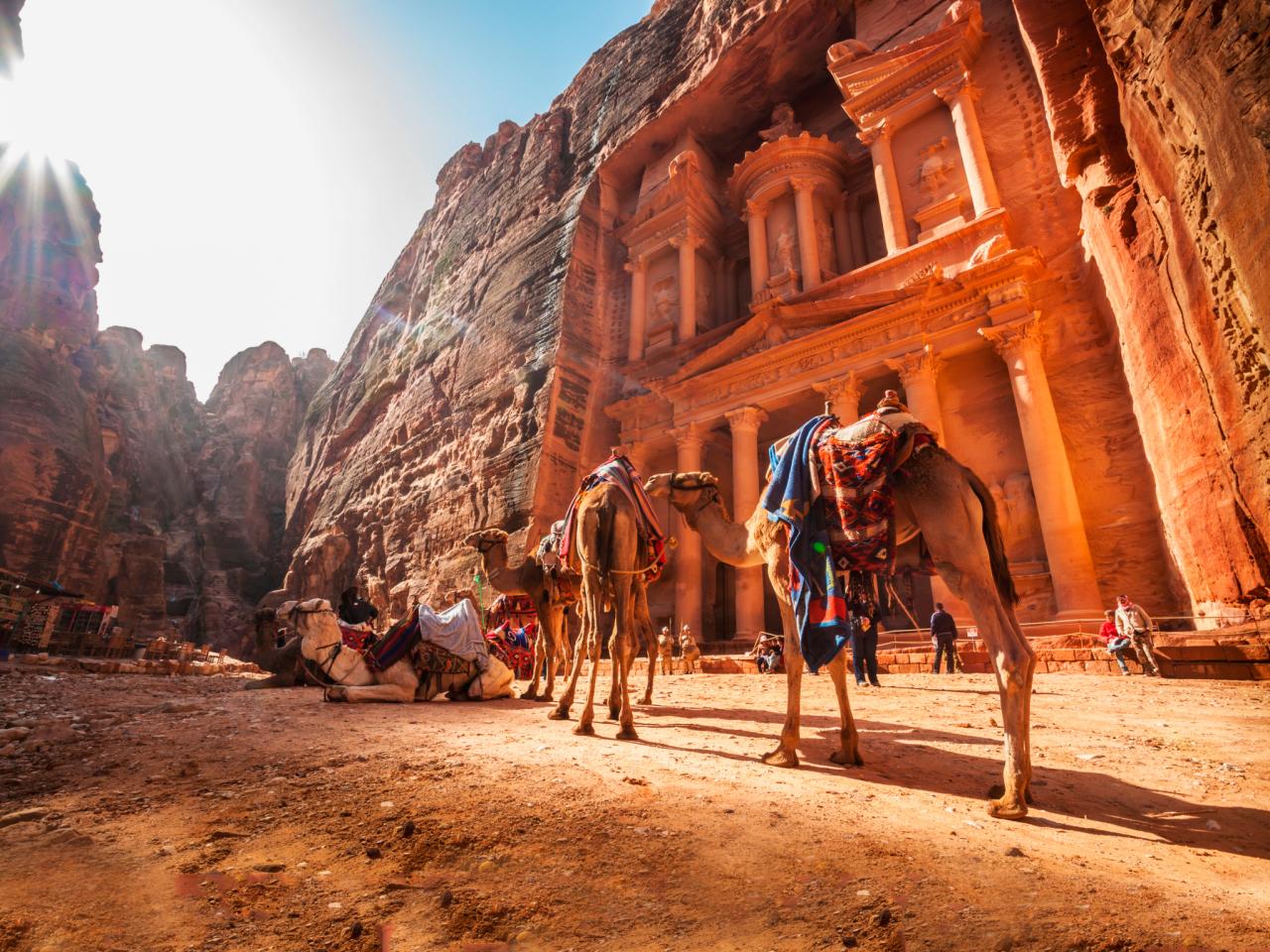The Discovery

The ruin was discovered by Swiss explorer Jean Louis Burckhardt in 1812. Thanks to its natural fortifications, the city remained elusive to outsiders since the time of Crusades. Until its discovery in 1812, the city’s location was known only to a handful of Bedouin tribes, who closely guarded the knoweldge fearing it would attract bounty hunters.
The Good Ol’ Days
In its heyday, Petra was home to more than 30,000 Nabataeans who survived in this desert landscape by creating a complex system of water management. This nomadic Arabian tribe leveraged their vast knowledge of the desert terrain to amass vast wealth by trading frankincense and myrrh in this major caravan route.
The Siq
An hour after walking into city, you’ll arrive at the the last narrow passage known as ‘The Siq’. This darkly lit pathway is said to be the place where Moses struck his staff that produced water during the Exodus. Beyond the path lies the Al Khazneh, better known as the Treasury.
The Treasury

The highlight of the ruins,’The Treasury’ is dramatically located at the end of a winding cleft in the rocks. Most likely carved around 100 B.C.E., this intricately detailed structure has been at the center of several myths and legends about the ruins. Originally built as a tomb for a Nabatean king, the misnomer ‘Treasury’ was attributed to it from the belief the site holds a treasure. So, is there a treasure bounty hidden under this carved rock? Several Bedouins believe so, and the bullet riddled surface of the upper Urn certainly hints at people trying to pry open the hidden treasures.
The Secret

Nabateans excelled in building stunning monuments that formed a harmonious link between the landscape and astronomical events of sun, moon and the stars. Recent studies indicate that these beautiful buildings were created with equinoxes and solstices in mind.
 During the winter solstice, the rays of the setting sun brilliantly illuminates the sacred altar of the deity. If you are visiting Petra during this event, take a detour from the tourist trail and head to ‘The Monastery’ located on the cliffs above the city.
During the winter solstice, the rays of the setting sun brilliantly illuminates the sacred altar of the deity. If you are visiting Petra during this event, take a detour from the tourist trail and head to ‘The Monastery’ located on the cliffs above the city.
From the podium, you can catch a glimpse of the setting sun projecting the shape of a lion head – the animal of the Nabataean goddess Al Uzza. All of these indicate to the deliberate attempt to convert the hall of the Urn Tomb into some kind of massive time-keeping device.
La Fin
The Roman conquest of Nabataeans sometime in 100 AD marked the beginning of the end of Petra. Over the next two years, the city was subjected to multiple waves of looting and the tombs soon collapsed due to flooding, erosion and weathering.









